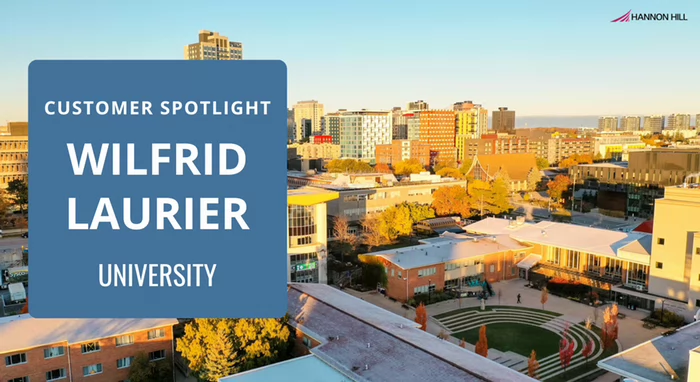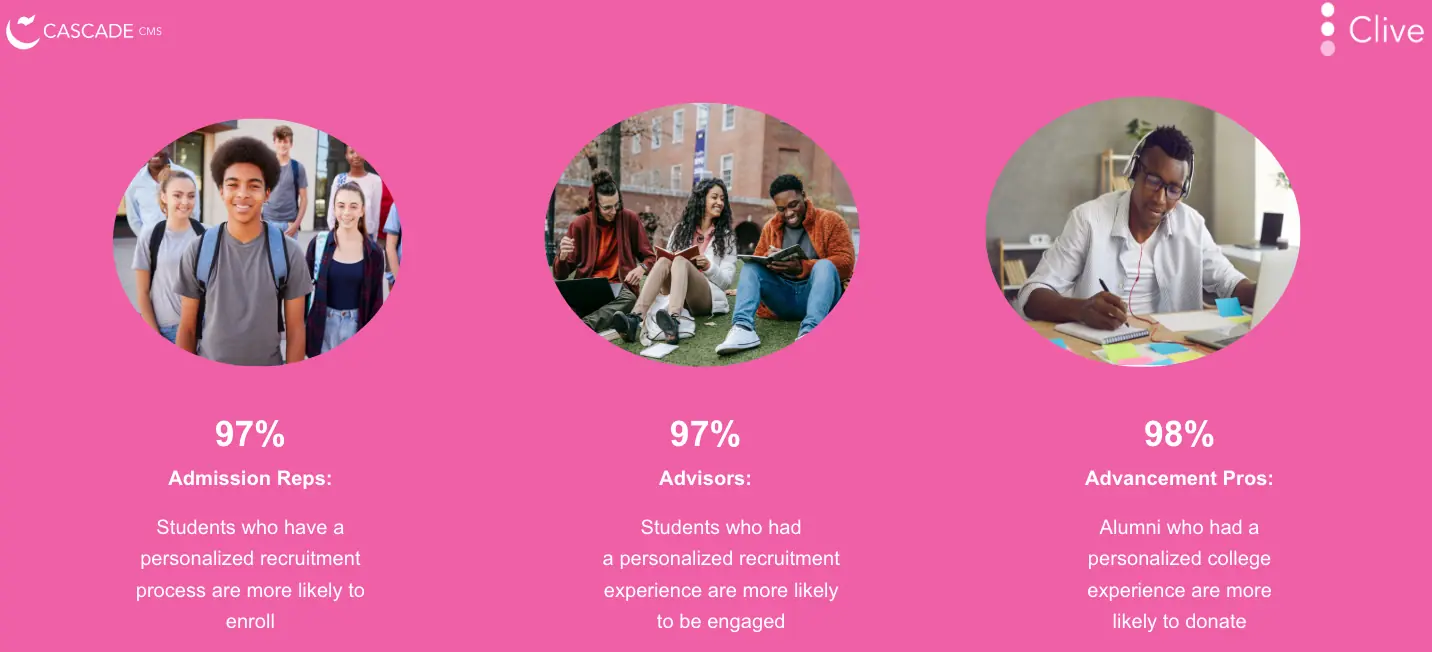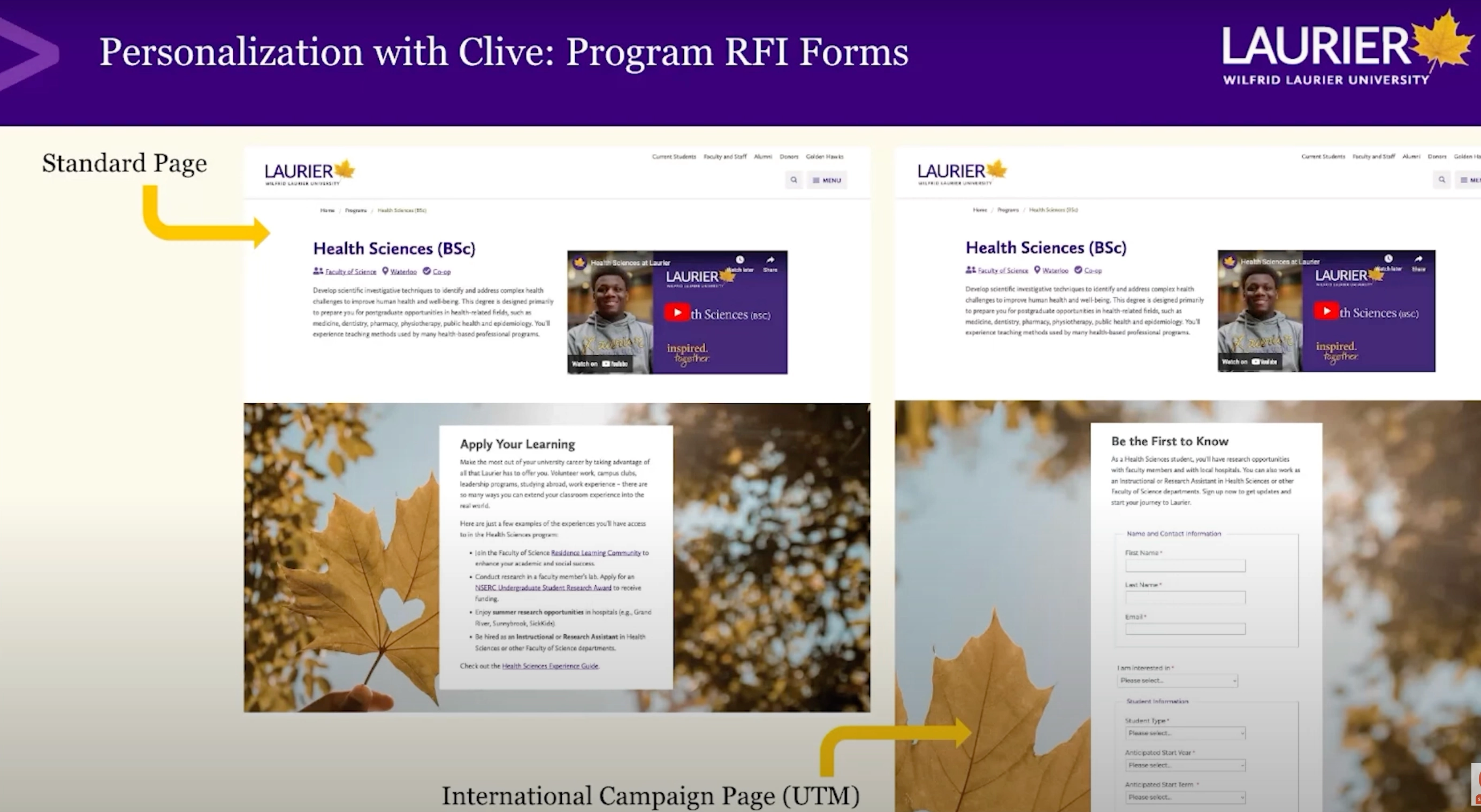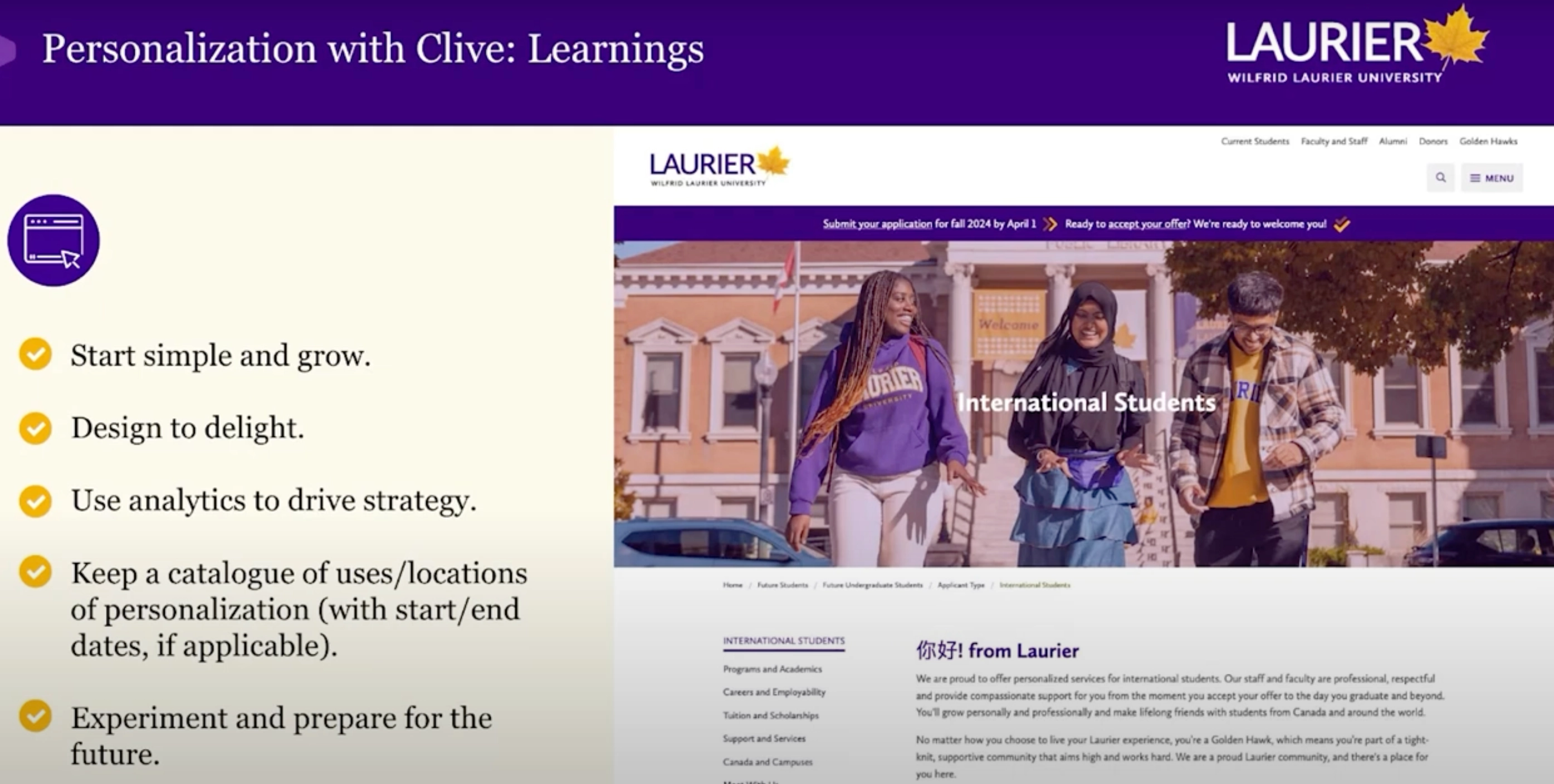
Volt Magazine recently hosted a video case study featuring Kat Liendgens, CEO at Hannon Hill, and Mallory O’Brien, Manager of Content Strategy at Wilfrid Laurier University.
The discussion centered on the transformative benefits of website personalization in higher education marketing.
This article summarizes the key points discussed and provides examples of website personalization. It also offers insights into how strategic website personalization tools can significantly enhance student recruitment and engagement.
By diving into statistical data and a detailed case study from Wilfrid Laurier University, we aim to equip you with practical knowledge and actionable strategies for implementing personalized digital experiences.
Web personalization is the process of creating customized experiences for visitors on your website by tailoring content to their specific needs, preferences, and past behaviors.
This strategy is integral to higher education institutions' digital approach, as it enhances user experience, increases engagement, and ultimately boosts conversion rates.
Consumers increasingly expect personalized interactions, with 72% stating they only engage with messaging that reflects their previous interactions.
This expectation extends to the digital experiences offered by higher education institutions.
A striking 74% of consumers express frustration when web content does not cater to their needs, revealing a significant preference for personalized digital environments.
Additionally, 83% of consumers are willing to share personal information for a more tailored experience.
This willingness highlights the potential for higher education websites to leverage personal data to enhance user engagement and satisfaction.
Furthermore, studies have shown that personalized calls to action can dramatically outperform generic ones, with potential improvements of up to 200% in effectiveness.

The benefits of personalization in higher education are profound.
According to research by Ellucian, 97% of admissions representatives agree that students who experience a personalized recruitment process are more likely to enroll.
97% of these students also tend to be more engaged during their time at the institution.
And 98% of alumni who had personalized experiences are more likely to contribute post-graduation.
First impressions on college websites are crucial:
87% of first-time visitors to a college website never come back!
This statistic underscores the importance of delivering personalized content at the initial point of contact.
The looming demographic enrollment cliff, which will result in a significant decline in high school graduates by 2026, poses a critical challenge for higher education institutions.
The decline in undergraduate enrollment, which has already begun, highlights the need for colleges and universities to adopt more inclusive and targeted recruitment strategies that address a broader array of potential students, including adult learners and international students.
The imperative for personalized web content in higher education is clear.
It not only meets consumer expectations but also significantly enhances engagement and conversion rates, supporting recruitment and retention efforts amidst challenging demographic trends.
As higher education continues to evolve, institutions must prioritize and refine their personalization strategies to effectively meet the needs of a diverse and changing student population.

Mallory O’Brien from Wilfrid Laurier University (WLU) highlighted the institution’s strategic use of Clive, Hannon Hill’s web personalization tool, to enhance international recruitment efforts while maintaining the integrity of domestic engagement.
WLU, a century-old university in southern Ontario, faces intense competition for international students, especially given Canada's recent international student cap.
This situation prioritizes tailored content strategies to attract and reassure prospective international students amidst a volatile recruitment climate.
One of the foundational steps in WLU's approach involves simple yet effective personalization directly from the homepage.
This method differentiates content for domestic versus international visitors.

For example, Canadian users might see a seasonal image of the campus during winter. At the same time, international visitors see a fall scene, which portrays a welcoming and diverse campus environment.
Additionally, the text is customized to minimize regional jargon and focus on information pertinent to international students who may be less familiar with the institution.
This straightforward tactic has proven effective, with international visitor conversion rates notably higher than those of domestic visitors (1.97% vs. 0.72%).
Further, WLU employs a more nuanced strategy by integrating a personalized Request for Information (RFI) form for users from targeted international locations.
This approach leverages UTM codes to deliver personalized content, ensuring that international prospects receive a tailored experience without disrupting the domestic user journey.

The impact of these personalization efforts at WLU is significant.
In specific campaigns targeting health sciences, for instance, the university achieved a remarkable:
7.2% conversion rate with over 2,000 sign-ups.
The results underscore the efficacy of personalized engagement for international audiences.
These results highlight the critical role of tailored content in enhancing recruitment strategies and the potential for substantial gains in student enrollment through targeted personalization.

WLU’s experience underscores several key strategies for effective web personalization:
1) Start Simple and Grow
Begin with accessible personalization based on available data like location and previous interactions, and gradually increase complexity.
2) Designed to Delight
Focus on creating engaging user experiences that anticipate and meet the expectations of prospective students, particularly younger demographics who value personalized interactions.
3) Use Analytics to Drive Strategy
Employ analytics to continuously refine personalization tactics based on user engagement and feedback.
4) Cataloging Personalization Efforts
Maintain a detailed record of personalization strategies and their outcomes to manage content effectively and scale personalization efforts across the platform.
5) Experiment and Prepare for the Future
Be flexible and willing to experiment with new approaches to stay ahead in a rapidly evolving digital landscape, anticipating further integration of AI-driven personalization.

Wilfrid Laurier University’s use of web personalization illustrates how tailored content impacts international student recruitment efforts.
By focusing on user-specific customization, WLU enhances the user experience and significantly improves conversion rates and overall engagement. This sets a compelling example for other institutions in the face of demographic challenges and heightened competition for international students.
To learn more about how Clive can help you tailor your content, request a discovery call by filling out the form below.
Last Updated: May 21, 2024 11:00 AM